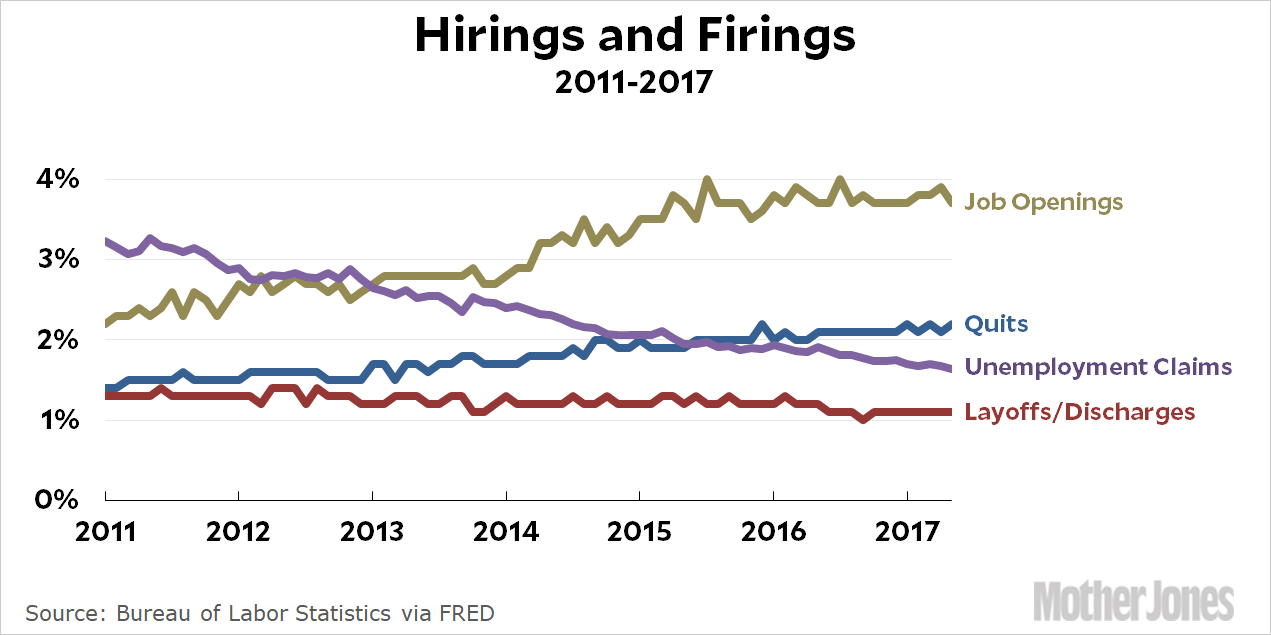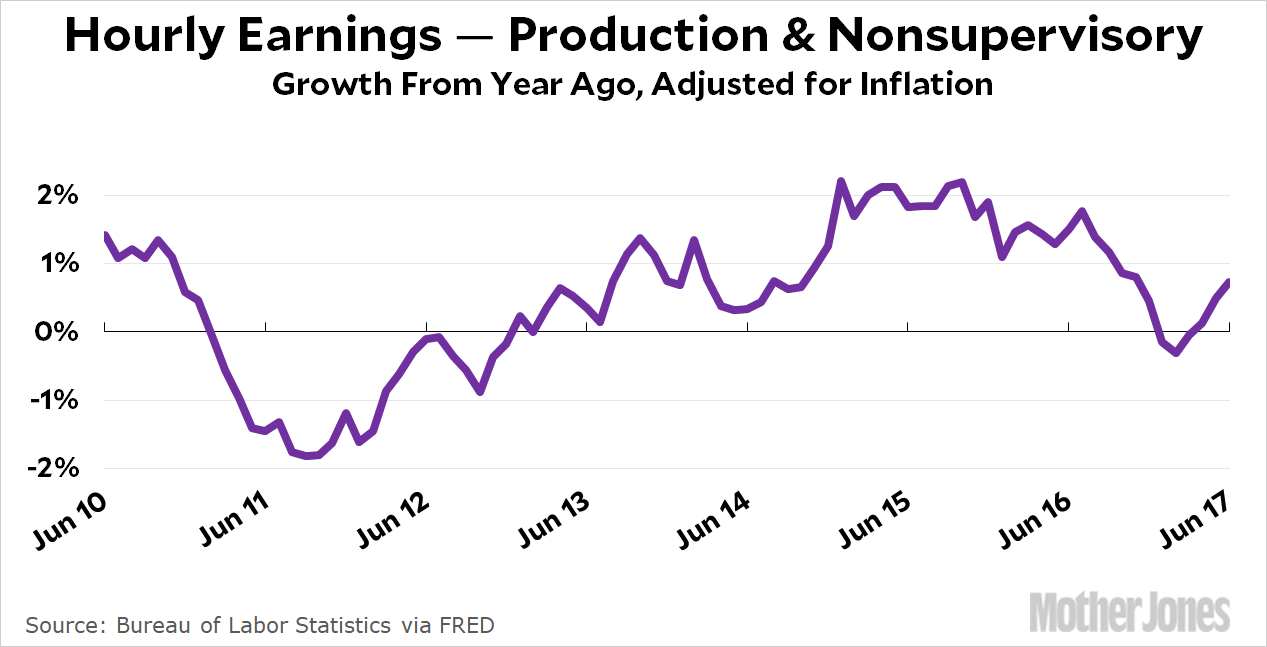The Wall Street Journal reports on the strength of the job market:
Americans are less likely to be laid off than at any point in at least 50 years….The steep fall in layoffs is mainly a result of a vastly improved labor market. It means Americans have more job security than they may realize less than a decade after dismissals spiked in the 2007-2009 recession….After nearly seven years of consistent job growth, firms are reluctant to let employees go in a tight labor market in which available workers with a recent employment history are quickly snapped up.
The Journal is right about all this. Here’s a summary of the Labor Department’s JOLTS data since the end of the recession:

Layoffs are going down. That’s good. Initial unemployment claims are going down. That’s good. Voluntary quits are going up. That’s good, because it signals that people are confident about finding a new job (or have already been recruited away into one). And job openings are up. That’s good, because it means there are more opportunities for job seekers.
And yet, we still have this chart that I posted on Friday:

There are lots of job openings; managers report trouble finding workers; and voluntary quits are up. Despite all this, though, wages have barely moved. The most obvious way to fill job openings and keep people from quitting is to raise wages, but that hasn’t happened.
There really is something of a mystery here. Nearly all the data points to a tight labor market with the exception of the single most important bit of data: wages. Rising wages are the clearest sign of a tight labor market, but we’re not seeing them. Not at the working and middle-class level, anyway. What’s going on?

















